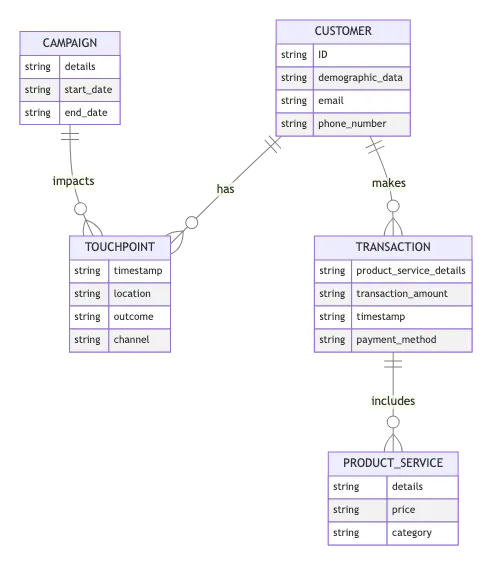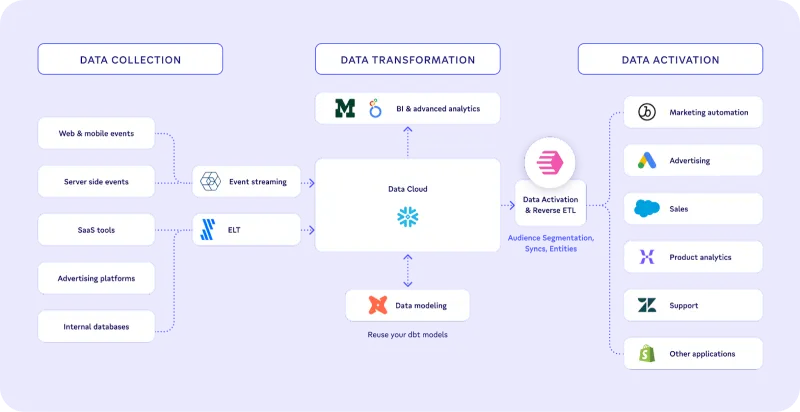Think of your data as tiny puzzle pieces. Like a jigsaw puzzle enthusiast assembling thousands of pieces into a single, coherent picture, a customer data platform (CDP) pieces together disparate data points into a unified image of customer behavior. 🧩
And exactly how all this data is organized and stored is dictated by the CDP’s data model.
Just as the puzzle enthusiast references the puzzle box to understand how each piece contributes to the overall image, the CDP’s data model outlines how each data point fits into the grand schema of customer information. 🖼️
Take a look at the following example of a typical CDP data model.

Does any of this look familiar? If your company uses a modern data stack, you probably already store most of this information in your data warehouse.
So, why devote valuable time and resources to building and maintaining a new data model for your CDP when your data warehouse already holds all the data you need?
Pssttt... 👂 There's a more efficient way to leverage the power of CDPs without falling prey to the repetitive cycle of data modeling.
Data Activation is the answer
You already have a data warehouse that acts as a centralized data hub, consolidating and storing customer data from any source. What's missing is the ability to make the data actionable in all of your marketing and advertising tools.
That’s where a Data Activation platform like Census comes in. Census unlocks and transforms all your raw, disparate data (in your data warehouse or data lake) into actionable insights that inform and enhance your business decisions and customer experiences.

Census can also help you build a composable CDP using components in your stack to build a CDP on top of your existing data infrastructure.
So you can engage in a glorified duplication process, wrestling with the complexity and rigidity of the CDP's data model when the very same information is already well-documented in your data warehouse, or you can get started with Census in 3 easy steps:
- Connect your data source. This can be a data warehouse like Snowflake, BigQuery, Redshift, or Databricks. Or a database like Postgres, SQL Server, or MySQL. 🔌
- Map fields to sync customer data. You can even define custom audience segments within Census Audience Hub to optimize your campaigns and messaging.🗺️
- Connect your destination application. We have integrations with 1300+ SaaS tools (and more on the way). 🤯
Book a demo with one of our product specialists to see how we can help you build custom audience segments and sync customer data to all of your marketing and advertising tools, without writing any code. 💪

















